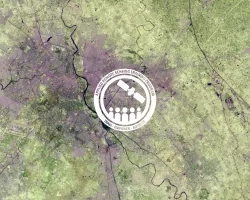Description
The United Nations Millennium Ecosystem Assessment states: “ecosystems are critical to human well-being - to our health, our prosperity, our security, and to our social and cultural identity.” Conservation and biodiversity management play important roles in maintaining healthy ecosystems. Earth observations can help with these efforts. This online webinar series introduces participants to the use of satellite data for conservation and biodiversity applications. The series will highlight specific projects that have successfully used satellite data. Examples include:
- Monitoring chimpanzee habitat loss
- Decreasing whale mortality
- Detecting penguins
- Monitoring wildfires
- Biodiversity observation networks
By the end of this training, attendees will:
- be able to outline uses of remote sensing for habitat suitability, species population dynamics, and monitoring wildfires
- learn about the Group on Earth Observations Biodiversity Observation Network (GEOBON), Marine Biodiversity Observation Network (MBON), and essential biodiversity variables
This training is designed for individuals and organizations interested in using satellite imagery for conservation and biodiversity.
- Two 1-hour sessions
This session will focus on remote sensing for habitat suitability, species population dynamics, and monitoring wildfires.
Materials:
Materiales en Español:
This session will focus on the Group on Earth Observations Biodiversity Observation Network (GEOBON), Marine Biodiversity Observation Network (MBON), and essential biodiversity variables.
Materials:
Materiales en Español:



